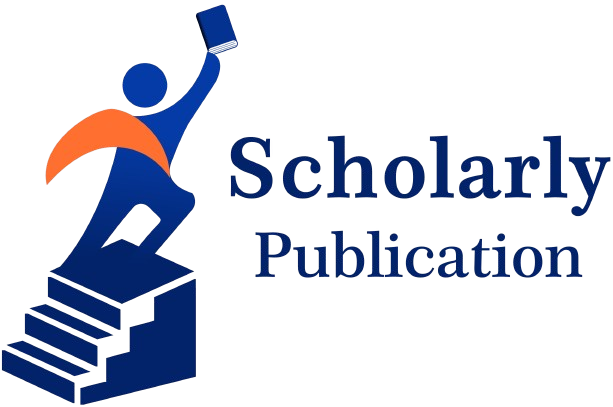An overview on Taguchi’s method employed for product quality improvement and its control
Volume 1, Issue 1, Article Number: 241001 (2024)
1Department of Mechanical Engineering, Arya College of Engineering, Jaipur – 302028, India
2Department of Mechanical Engineering, MJP Rohilkhand University, Bareilly – 243006, India
3Department of Mechanical Engineering, Cambridge Institute of Polytechnic, Ranchi – 835103, India
*Corresponding Author: harisarquam30@gmail.com
Received: 13 September 2024 | Revised: 26 September 2024
Accepted: 28 September 2024 | Published Online: 05 October 2024
DOI: https://doi.org/10.5281/zenodo.14900600
© 2024 The Authors, under a Creative Commons license, Published by Scholarly Publication
Abstract
Genich Taguchi, a Japanese engineer and statistician, developed a methodology for improving and controlling the quality of produced goods. His robust optimization technique is widely used in the field of quality improvement and experimental design. Taguchi’s approach aims to improve the quality of products and processes by minimizing variation and reducing the sensitivity of a system to various factors. The statistical approach for quality is valid for the various areas of engineering such as product design and development, life-sciences, and management fields (basically advertising and marketing). Taguchi’s statistical approach is incorporated by the various techniques of the “concept of loss function” and “offline quality control”. He offered a special mathematical relationship between performance and expected harm (Loss), this is explained by the “concept of the loss function”. Taguchi’s method has been widely applied in various industries, including manufacturing, engineering, and design, to optimize processes, reduce variation, and enhance product quality. It provides a systematic and efficient approach to experimentation and optimization, helping organizations achieve higher levels of quality and performance while minimizing costs.
Keywords
Quality; Concept of loss function; Product design; System design
References
- Pagare, A. K., & Kumar, N. (2022). Development of framework to increase flexibility in shop floor and maximize production rate using substitute machine. Jurnal Kejuruteraan 34, 585-589.
- Pagare, A. K., & Kumar, N. (2023). A smart management of small scale automobile manufacturing industry for maximum production: A critical review. GVU International Journal of Convergence of Technology and Management, 8, 26-30.
- Aman, A., Bhardwaj, R., Gahlot, P., & Phanden, R. K. (2023). Selection of cutting tool for desired surface finish in milling machine using Taguchi optimization methodology. Materials Today: Proceedings, 78, 444-448.
[View Article] [Google Scholar]
- Nagaraja, B., Almeida, F., Yousef, A., Kumar, P., Ajaykumar, A. R., & Al-Mdallal, Q. (2023). Empirical study for Nusselt number optimization for the flow using ANOVA and Taguchi method. Case Studies in Thermal Engineering, 50, 103505.
[View Article] [Google Scholar]
- Priyanga, R., & Muthadhi, A. (2023). Optimization of compressive strength of cementitious matrix composition of textile reinforced concrete—Taguchi approach. Results in Control and Optimization, 10, 100205.
[View Article] [Google Scholar]
- Madani, T., Boukraa, M., Aissani, M., Chekifi, T., Ziadi, A., & Zirari, M. (2023). Experimental investigation and numerical analysis using Taguchi and ANOVA methods for underwater friction stir welding of aluminium alloy 2017 process improvement. International Journal of Pressure Vessels and Piping, 201, 104879.
[View Article] [Google Scholar]
- Zhujani, F., Todorov, G., Kamberov, K., & Abdullahu, F. (2023). Mathematical modeling and optimization of machining parameters in CNC turning process of Inconel 718 using the Taguchi method. Journal of Engineering Research.
[View Article] [Google Scholar]
- Li, A.-D., Xue, B., & Zhang, M. (2023). Multi-objective particle swarm optimization for key quality feature selection in complex manufacturing processes. Information Sciences, 641, 119062.
[View Article] [Google Scholar]
- Ben Taher, M. A., Pelay, U., Russeil, S., & Bougeard, D. (2023). A novel design to optimize the optical performances of parabolic trough collector using Taguchi, ANOVA and grey relational analysis methods. Renewable Energy, 216, 119105.
[View Article] [Google Scholar]
- Soori, M., Karimi Ghaleh Jough, F., & Arezoo, B. (2024). Surface quality enhancement by constant scallop-height in three-axis milling operations. Results in Surfaces and Interfaces, 14, 100208.
[View Article] [Google Scholar]
- Bottani, E., Montanari, R., Volpi, A., & Tebaldi, L. (2023). Statistical process control of assembly lines in manufacturing. Journal of Industrial Information Integration, 32, 100435.
[View Article] [Google Scholar]
- Wan, Q., Chen, L., & Zhu, M. (2023). A reliability-oriented integration model of production control, adaptive quality control policy, and maintenance planning for continuous flow processes. Computers & Industrial Engineering, 176, 108985.
[View Article] [Google Scholar]
- Haq, M. Z. U., Sood, H., Kumar, R., & Merta, I. (2024). Taguchi-optimized triple-aluminosilicate geopolymer bricks with recycled sand: A sustainable construction solution. Case Studies in Construction Materials, 20, 02780.
[View Article] [Google Scholar]
- Tawalbeh, M., Farooq, A., Martis, R., & Al-Othman, A. (2024). Optimization techniques for electrochemical devices for hydrogen production and energy storage applications. International Journal of Hydrogen Energy, 52, 1058–1092.
[View Article] [Google Scholar]
- Adazabra, A. N., & Viruthagiri, G. (2023). Effect of variegated biosolids incorporation on the technological properties of fired clay bricks using Taguchi method. Case Studies in Construction Materials, 19, 02314.
[View Article] [Google Scholar]
- Kulkarni, T., Toksha, B., Shirsath, S., Pankade, S., & Autee, A. T. (2023). Construction and praxis of Six Sigma DMAIC for bearing manufacturing process. Materials Today: Proceedings, 72, 1426–1433.
Cite This Article
H. Arquam, V. K. Sharma, A. B. Verma, and J. Kumbhakar, “An overview on Taguchi’s method employed for product quality improvement and its control,” Radius: Journal of Science and Technology 1(1) (2024) 241001. https://doi.org/10.5281/zenodo.14900600
Rights & Permission
This is an open access article published under the Creative Commons Attribution (CC BY) International License, which allows unrestricted use, distribution, and reproduction in any medium, provided the original work is properly cited. No permission is needed to reuse this content under the terms of the license.
For uses not covered above, please contact the Scholarly Publication Rights Department.

